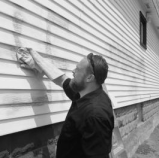 The leader of one of Canada’s largest Islamic groups accused Prime Minister Stephen Harper on Monday of being indifferent to Omar Khadr’s plight because he’s “brown-skinned” and a Muslim.
The leader of one of Canada’s largest Islamic groups accused Prime Minister Stephen Harper on Monday of being indifferent to Omar Khadr’s plight because he’s “brown-skinned” and a Muslim.
In an opinion piece released to the media, Mohamed Elmasry, national president of the Canadian Islamic Congress, wrote that Harper is “callously” unconcerned about the 21-year-old Khadr, who faces trial before a U.S. military tribunal at Guantanamo Bay, Cuba, in October.
“In this case, Mr. Harper is playing politics because of the backdrop of Islamophobia in this country,” Elmasry said. “This is where a leader comes in, to say this is really wrong and I have to correct that wrong by bringing this person [back to Canada] even if I lose some political points with Islamophobes.”
Khadr’s lawyers and others want Ottawa to repatriate Khadr – who was 15 in 2002 when he was accused of killing a U.S. army medic in Afghanistan – from the U.S. detention centre.
The prime minister repeated his vow to leave the case in U.S. hands following the release of a videotape showing a Canadian official interrogating a crying and despondent Khadr at Guantanamo Bay in 2004. The official was told the U.S. military had deprived the then 17-year-old of sleep for weeks to make him “more amenable and willing to talk,” according to a recently released internal report from the Department of Foreign Affairs.
Elmasry contrasted Khadr’s case with that of dual Canadian-British citizen William Sampson, who was freed from a death sentence in Saudi Arabia in 2003. Prior to his release, Ottawa had said it had made pleas on Sampson’s behalf to the highest levels of the Saudi government.
“Why is Stephen Harper so callously indifferent to Omar Khadr’s case?” Elmasry wrote. “It’s painfully obvious: William Sampson is a white westerner while his fellow Canadian citizen, Omar Khadr, is brown-skinned and a Muslim.”


 In January this year the small Quebec town of
In January this year the small Quebec town of